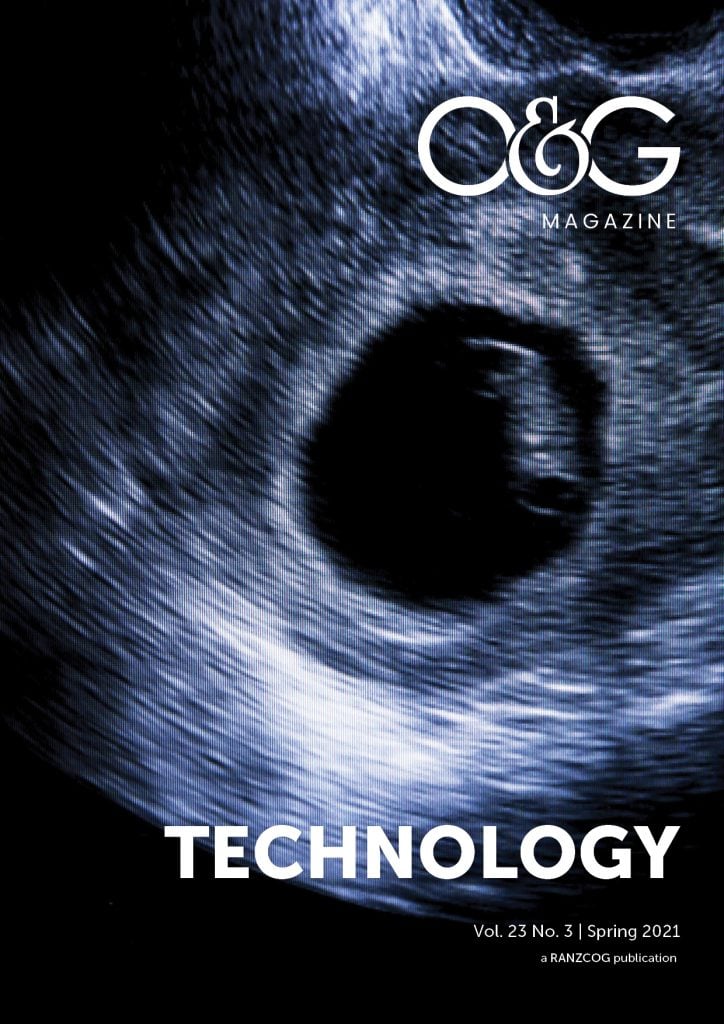Non-invasive prenatal testing (NIPT) is the process of examining cell-free fetal DNA in the maternal circulation. Since the first non-invasive prenatal testing was performed in Australia during late 2012, there have been rapid developments in test uptake and utility. Increasing popularity and technological advances have brought further understanding of the strengths and limitations of non-invasive prenatal testing.
Understanding non-invasive prenatal testing relies on an understanding of basic biology. Genetic information (genes) are arranged on larger structures called chromosomes, which are numbered based on size. Humans typically have 22 pairs of autosomes, and a single pair of sex chromosomes, resulting in a total of 46 chromosomes. Aneuploidy is the term used to describe an imbalance in chromosomal material, and accounts for the majority of early miscarriage.1
First described by Bianchi and colleagues,2 the non-invasive prenatal testing has expanded from a simple screening test for Trisomy 21 (Down syndrome), to the option of assessing genome-wide aneuploidy, including the sex chromosomes, segmental changes and microdeletions.
The most common aneuploidy in the community is Trisomy 21. It is also the least lethal and most subtle of the autosomal aneuploidies, largely due to the 21st chromosome containing relatively limited genetic information, compared to its counterparts within the chromosomal library. On the other hand, Trisomy 1, which involves the largest chromosome is invariably associated with miscarriage when aneuploid, given the amount of genetic material that it stores.
Initial methods for detecting fetal aneuploidy using maternal blood attempted to detect whole fetal cells. However, the methodology presented challenges as the maternal innate immune system mopped up free fetal whole cells, rendering the test with low sensitivity and specificity.3 Fragments of trophoblastically derived DNA proved more fruitful, with the limitation there may be a discrepancy between the placental and fetal chromosomal complements due to mosaicism.
Counting DNA fragments is the basis of most non-invasive prenatal tests, to assess whether there is an overall difference in expected fragments, an example being over-representation of chromosome 21 in Trisomy 21. This methodology is seemingly simple; however, it relies on several key factors. Firstly, a major assumption is made that the maternal free DNA is non-contributive and the mother is assumed to be euploid. Secondly, a correction factor using complex mathematics is required to account for the relative size of the varying chromosomes. For example, as the 1st chromosome contains at least 10 times genetic information compared to the 21st chromosome, a correction for the number of increased fragments of the chromosomes is required. Lastly, an awareness is required that aneuploid placentae apoptose at different rates to euploid placentae. For example, a Trisomy 21 placenta sheds a vast amount of DNA into the maternal circulation, thus increasing the fetal fraction compared to the maternal complement which increases sensitivity of the test for chromosome 21.4
Fundamentally, non-invasive prenatal testing is a screening tool. Diagnostic testing using Chorionic Villus Sampling (CVS) or amniocentesis is recommended to provide certainty in the context of a high risk result. Additionally, formal first trimester ultrasonographic assessment is crucial, as not all congenital issues are chromosomal in origin. Without ultrasound, major anomalies such as anencephaly could be missed at this critical first trimester opportunity; as would assessment of multiple gestations, missed miscarriage and opportunities for other first trimester testing such as early pre-eclampsia screening.
Different test platforms have key differences. The Illumina platform (Generation, Percept, Nest, Genesyte) uses a counting methodology, that examines the whole genome by massively parallel sequencing. Fragments are assessed with respect to each other and are plotted with the X-axis being the chromosome in question, and the Y-axis reflecting the relative number of fragments. Mathematical modelling is required so the Y-axis is corrected to reflect euploidy and to correct for the different amount of genetic material on each chromosome. An imbalance in chromosomal material will result in an increased or reduced signal, provided there is no balanced aneuploidy, such as triploidy.
The Roche platform (Harmony) also uses a counting methodology which relies on comparing the key chromosomes (21, 18, 13, X and Y), to key reference chromosomes that are assumed to be euploid, such as chromosome 1. The Natera platform (Panorama) counts smaller fragments called SNPs (single nucleotide polymorphisms) to generate targeted genome assessment.
Although there are differences in methodology, all non-invasive prenatal testing brands perform extremely well for chromosome 21, with sensitivities and specificities of more than 99%. This means, in general, that a low risk result is very reassuring. A high risk result for Trisomy 21 has a high positive predictive value of greater than 90%. These findings are also partly attributed by the community incidence of Trisomy 21 and the increased apoptosis of the Trisomy 21 placenta as described above.
Performance metrics for Trisomies 18, 13 and the sex chromosomes are more variable, but given the relatively high incidence in the community, are used in conjunction with ultrasonographic screening to guide appropriate invasive testing when high risk.
Recently, the Illumina platform in particular has been used in Australia to assess all 46 chromosomes as well as large segmental changes. Screening for rare autosomal trisomies and segmental aneuploidy has been found to be far less impressive with a lower positive predictive value.5 There is a greater risk of a false positive result with this test option, which may contribute to heightened parental anxiety and unnecessary invasive testing, which has the small but real risk of iatrogenic pregnancy loss. In our practice, almost all rare autosomal trisomies detected on non-invasive prenatal tests have proven to be false positives. The few true positive cases in our cohort were detected independently by careful sonographic assessment, which revealed an abnormal appearing fetus.
Genetic counselling is defined as a communication process, which aims to help individuals, couples and families navigate the complex genetic contribution to specific health conditions.6 In this context, the purpose is to facilitate informed decision making, with respect to the preferences of the patient and family. Challenges arise when communicating complex information to the general population, in a way that is understandable. There is a current perception that the bigger and wider tests must be ‘better’, given the cost of non-invasive prenatal testing in Australia. We hope to have illustrated the importance of weighing the clinical utility of additional information detected using expanded non-invasive prenatal testing, against the limitations of reduced sensitivities and specificities in the context of screening conditions with very low community incidence.
In conclusion, non-invasive prenatal testing has revolutionised the detection of Trisomy 21, and, to a lesser degree, the other aneuploidies. With the expansion of non-invasive prenatal testing to include genome-wide, segmental and microdeletion screening, there are implications of increased invasive testing with the iatrogenic risk to the pregnancy. Whilst we welcome ongoing development of the test, careful sonographic assessment of the fetus continues to be critical and weighed against the use of indiscriminate technology and the ‘bigger is better’ approach.
References
- Maxwell SM, Colls P, Hodes-Wertz B, et al. Why do euploid embryos miscarry? A case-control study comparing the rate of aneuploidy within presumed euploid embryos that resulted in miscarriage or live birth using next-generation sequencing. Fertil Steril. 2016;106(6):1414-9.
- Pertl B, Bianchi DW. Fetal DNA in maternal plasma: emerging clinical applications. Obstetrics & Gynecology. 2001;98(3):483-90.
- Bianchi DW, Simpson JL, Jackson LG, et al. Fetal gender and aneuploidy detection using fetal cells in maternal blood: analysis of NIFTY I data. Prenatal Diagnosis: Published in Affiliation with the International Society for Prenatal Diagnosis. 2002;22(7):609-15.
- Lo YD, Lau TK, Zhang J, et al. Increased fetal DNA concentrations in the plasma of pregnant women carrying fetuses with trisomy 21. Clinical Chemistry. 1999;45(10):1747-51.
- Benn P, Malvestiti F, Grimi B, et al. Rare autosomal trisomies: comparison of detection through cell-free DNA analysis and direct chromosome preparation of chorionic villus samples. Ultrasound in Obstetrics & Gynecology. 2019;54(4):458-67.
- Patch C, Middleton A. Genetic counselling in the era of genomic medicine. British Medical Bulletin. 2018;126(1):27-36.








Leave a Reply